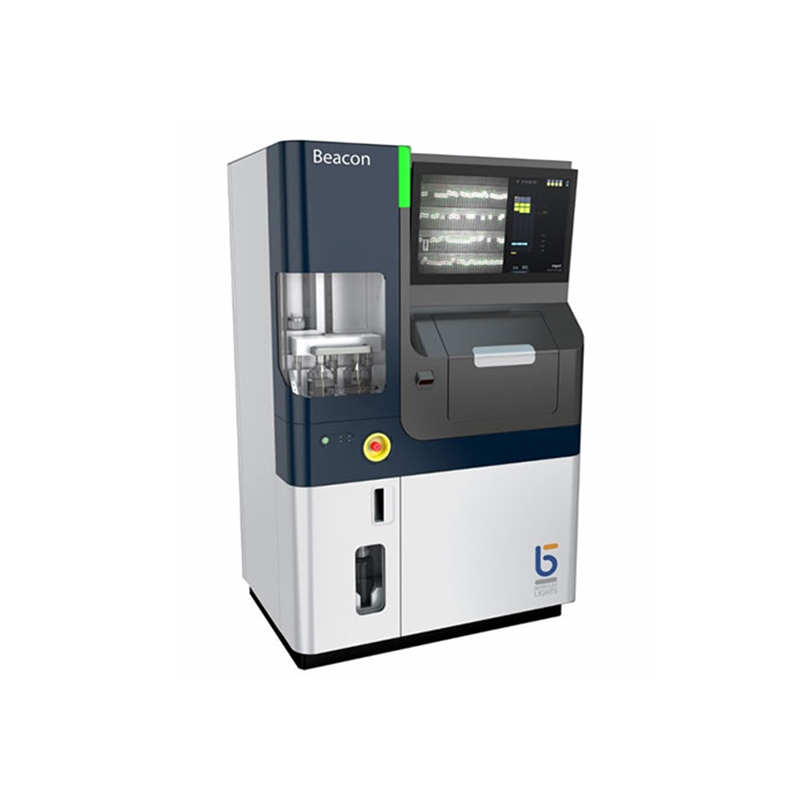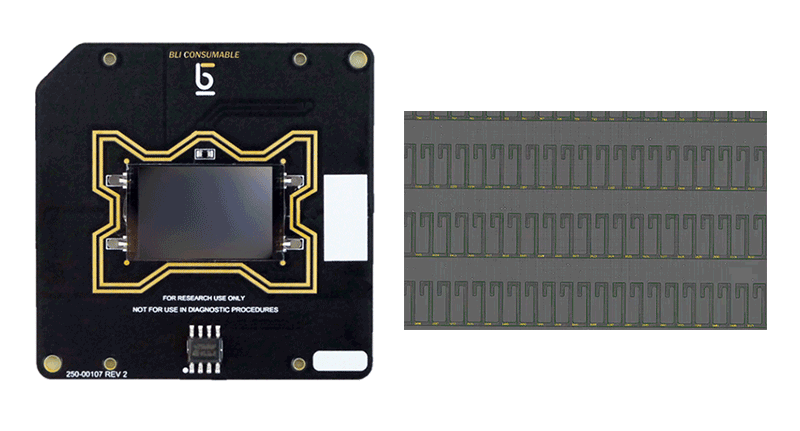

Release time:2021-09-18 16:48

Views:11308
By integrating photoelectric positioning technology and microfluidic technology, the single-cell photoconductive system realizes the high-throughput research of cell biology based on single cells in the nano upgrade chamber of the chip.
1、 Technological breakthrough
Although the existing single cell operation technologies in the development of monoclonal cell lines, such as limited dilution method and flow sorter, can obtain single cells, they often damage cells and interfere with the normal state of cells, so the proportion of clones is very low; There are also some disadvantages, such as poor monoclonal, difficult observation, long time, low flux, poor plasticity and so on. In addition, it is far from enough to obtain single cells, and appropriate solutions are needed for cell culture, detection, export and other processes. If the non integrated scheme is used, there will often be problems such as difficult culture, difficult analysis, difficult derivation or poor repeatability, which will erase the efforts to obtain single cells in the early stage.
Beacon single cell photoconductive system can directly operate and culture single target cells from the beginning of the experiment, with reliable results and high efficiency. This system combines the unique optoelectro positioning technology with the novel nanofluidic design. It can not only accurately select single cells on one chip, but also directly culture, real-time and continuously use multiple different channels to detect cell status and carry out a variety of experiments on single cells or monoclonal cells, According to the specific results read during the experiment, the target cells and target clones are derived.
Its four core modules import, culture, assay and export are perfectly combined to smoothly complete most of the processes required for the development of monoclonal cell lines. Automatic operation can avoid the interference of human factors in the development of conventional monoclonal cell lines, improve stability and repeatability, and make the final results more scientific and reliable.

Beacon single cell photoconductive system is the only comprehensive system that can directly control single cells without damage and carry out full-automatic culture, detection, cloning, export and in-depth research. It will greatly improve the research effect of researchers and help our department make a breakthrough in the development of monoclonal cell lines, save time and do more projects.
2、 Application field
1. Antiviral neutralizing antibody discovery
At present, there are three strategies to obtain antiviral neutralizing antibodies: 1. Obtain them from the blood of rehabilitated patients; 2. Mice were immunized with viral protein and obtained by antibody discovery process; 3. Obtained by screening human natural antibody library. The neutralizing antibody obtained by the first strategy has the best effect and the shortest time. The enriched B cells from the blood of rehabilitation patients were screened and sequenced at the level of single B cells, so as to obtain antiviral neutralizing antibodies quickly and efficiently. Single B cell antibody discovery has many advantages and has become a hot new direction in the field of antibody discovery. However, it is difficult to realize the separation, screening and recovery of single B cells due to the conventional technology platform. After introducing a single B cell into the nanopen in the chip, beacon single cell photoconductive system can detect the secretion of antigen-specific antibody in parallel, verify the relevant functionality, and export the target B cells. With the downstream single-cell mRNA sequencing, the cell phenotype screening can be completed within two days and the corresponding antibody heavy light chain sequence can be obtained. Compared with the traditional antibody preparation technology, beacon platform has the advantages of high cell utilization, high recovery efficiency, supporting humanization, heavy chain and light chain sequence information pairing and so on.
2. Antibody engineering
In the process of antibody drug development, multiple rounds of transformation and optimization are often needed to make the screened antibody have the best structure and activity. For example, the antibody gene is processed and transformed by genetic engineering, transfected into engineering cells for reassembly, and functional screening and analysis are carried out to confirm whether the transformation meets the needs. Traditional post transfection screening takes several weeks, while beacon single cell photoconductive system can be realized in only 3-5 days, which greatly saves the time and cost of antibody engineering optimization process.
3. Tumor immunotherapy
In tumor immunotherapy, in order to verify the transformation efficiency of cells and optimize the dose of therapeutic cells, the industry has been looking for a technical means for efficient screening and verification of transformed T lymphocytes. Beacon single cell photoconductive system can specifically activate T lymphocytes and detect the secretion of specific cytokines, so as to realize the functional screening of T lymphocytes. After screening, T lymphocytes can be derived, which can greatly improve the screening efficiency by means of downstream gene profiling, TCR sequencing and TCR engineering.
4. Gene editing
Gene editing technology is an important research means in immunology, cell biology and other disciplines. It is also an important way in the fields of species improvement, disease prevention, treatment and treatment. In the process of routine gene editing experiment, in the screening process after transfection, it takes 1-2 months to carry out a large number of planking, monoclonal screening and identification by imaging or biochemical means, while beacon single cell photoconductive system can automatically screen the required target clones on a larger scale in only 5 days, which can improve the experimental efficiency and save labor cost, More reliable and detailed experimental results can also be obtained.
5. Study on cell co culture
Cell co culture technology in vitro can simulate the microenvironment generated in vivo, so as to better observe the interaction between cells, cells and culture environment, and explore the action mechanism and possible targets of drugs. Because of its precise cell operation and high throughput, beacon single cell photoconductive system can provide more research means for cell co culture in vitro, such as experimental strategies such as killing, phagocytosis and synergy between cells.
6. Cell cloning and subcloning
Limited dilution, flow sorting and other methods are common means of cell cloning. After dividing the cells into dozens of microplates, it is also necessary to manually check whether they are single cells one by one through the microscope, judge them through the imaging system or identify them by biochemical means. Each round takes 3-4 weeks. According to the different monoclonal requirements of different applications, one to two rounds of cloning steps are required, The whole process is extremely cumbersome and time-consuming, and there is a great possibility of misoperation. Beacon single cell photoconductive system can realize fully automatic cell cloning and recovery within 5 days, and easily obtain high-quality clones with a monoclonal proportion of 99.5%. The whole process is equipped with image and image recording, and functional verification links can be designed. Subcloning can also be carried out on the chip by using beacon single cell photoconductive system. The parallel culture of cloning and subcloning can be easily realized by separating and exporting some monoclonal cells in specific nanopen on the chip and expanding the culture.
7. Phenotype corresponds to genotype
The correspondence between phenotype and genotype has always been one of the pain points in the research of immunology and cell biology. It has many difficulties, such as complex operation, low accuracy, consuming a lot of human and material resources and so on. Because beacon single cell photoconductive system can be customized and oriented, this problem is completely solved. After completing the performance detection of monoclonal antibodies, beacon supports directional export of specific clones, and directly docking phenotypic data and genotype data with downstream gene sequencing data. At the same time, beacon single cell photoconductive system also supports the export of monoclonal subclones. While sequencing some subclones, continue to culture the original single clone and conduct more biochemical analysis, which greatly enriches the data types available from the same monoclonal sample.
3、 Technical advantages
1. Precise and lossless single cell operation: it can easily operate thousands of single cells at the same time by using photoelectric positioning system, Parallel culture and analysis were carried out.
2. High flux: up to 4 chips can be run at the same time, about 50000 cells. It also supports a variety of chip types to flexibly meet the experimental needs of different fluxes.
3. Fully automatic: cell introduction, culture, cloning, subcloning, detection and screening are all automatic processes, avoiding possible errors or errors caused by manual operation to the greatest extent.
4. The software is easy to use: touch screen operation, graphical interface, flexible, intuitive and easy to use experimental process design.
5. Significant time saving: the single B cell antibody discovery process is reduced from 3-6 months to 2 days; The cloning process is reduced from 2-3 weeks to about 3 days.
6. High sensitivity: a conventional single cell is placed in a microplate and needs to be cultured for several weeks. After reaching a certain density, the secretory protein and other indicators can be detected; The volume of each nanopen of beacon is only 0.5-1 NL. A single cell is placed in it, and the density is equal to 1e6 cell / ml. therefore, it is easy to detect and has high sensitivity.